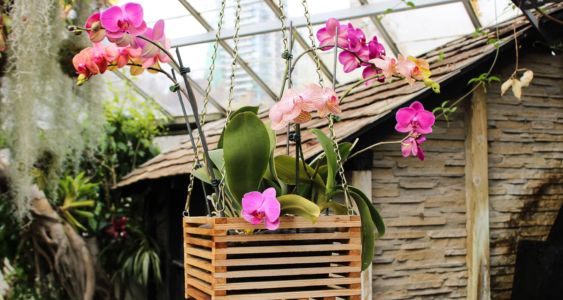Orchids are renowned for their exquisite beauty and elegance, making them a popular choice among plant enthusiasts. However, many people hesitate to bring these delicate flowers into their homes due to misconceptions about their care. With the right knowledge and care, orchids can thrive and reward you with their stunning blooms. In this ultimate guide to orchid care at home, we’ll demystify the process and help you become a successful orchid cultivator.
Mastering Orchid Care at Home: 10 Expert Tips
Let’s explore the essentials of orchid care, helping you become a confident orchid enthusiast.
1. Understanding Orchid Varieties
Orchids belong to one of the largest plant families, Orchidaceae, which comprises thousands of species and hybrids. Different orchid varieties have varying care requirements, so it’s essential to identify the type of orchid you have. Some common orchids you might encounter include Phalaenopsis, Cymbidium, Dendrobium, and Oncidium. Research your specific orchid to understand its unique needs.

2. Light Requirements
Proper lighting is crucial for orchid health and flowering. In general, orchids thrive in bright, indirect light. Avoid direct sunlight, as it can scorch their delicate leaves. A south- or east-facing window is often ideal for providing the right balance of light. If your home lacks adequate natural light, consider using grow lights designed for orchids.
3. Temperature and Humidity
Orchids typically prefer daytime temperatures between 70-85°F (21-29°C) and nighttime temperatures about 10°F (6°C) cooler. Adequate humidity is essential, especially if you live in a dry climate. You can increase humidity by using a humidity tray, a room humidifier, or misting the orchids regularly.

4. Potting and Repotting
Orchids are typically potted in a well-draining orchid mix, which often includes materials like bark, sphagnum moss, or perlite. Repotting should be done when the orchid outgrows its pot or when the potting mix breaks down. Most orchids benefit from repotting every 1-2 years.
5. Watering
Overwatering is one of the most common mistakes in orchid care. Orchids prefer to dry out slightly between waterings. Water thoroughly but allow excess water to drain from the pot. Avoid leaving the orchid sitting in standing water, as this can lead to root rot.
To determine when to water, stick your finger into the potting mix about an inch deep. If it feels dry, it’s time to water. If it still feels moist, wait a few more days before checking again.
6. Fertilizing
Orchids need regular feeding to support their growth and blooming. Use a balanced, water-soluble orchid fertilizer, and dilute it to half strength. Apply the fertilizer every 2-4 weeks during the growing season (usually spring to early autumn) and reduce or eliminate feeding during the dormant period.
7. Pruning and Maintenance

Prune dead or yellowing leaves or spent flower spikes to encourage new growth. Be gentle when handling orchids, as their roots and stems can be quite fragile. Use clean, sterilized scissors or pruning shears to prevent the spread of diseases.
8. Dealing with Common Issues
- Pests: Keep an eye out for common orchid pests like aphids, mealybugs, and scale insects. Remove them by gently wiping the affected areas with a soft cloth or using a mild soap solution.
- Diseases: Prevent fungal and bacterial diseases by ensuring proper airflow and avoiding overwatering. If you notice signs of disease, isolate the infected orchid to prevent it from spreading to others.
- Yellowing Leaves: Yellowing leaves can indicate various issues, including overwatering, underwatering, or nutrient deficiencies. Address the underlying problem to restore the orchid’s health.
- No Blooms: If your orchid isn’t flowering, it may need more light, proper fertilization, or a period of cooler temperatures to initiate blooming.
9. Orchid Dormancy

Many orchids go through a natural dormancy period during which they require less water and lower temperatures to initiate blooming. Be aware of your orchid’s natural growth cycle and adjust care accordingly.
10. Patience and Observation
Successful orchid care at home often requires patience and careful observation. Orchids can be slow to adapt and respond to changes in their environment. Pay attention to your orchid’s cues, such as new growth or flower spikes, to gauge its overall health.
Orchid Care: Conclusion
By following this ultimate guide to orchid care at home and tailoring your approach to your specific orchid’s needs, you can enjoy the beauty of these exquisite flowers in your own living space. With a bit of dedication and understanding, you’ll become a confident orchid enthusiast, fostering beautiful blooms and lush foliage for years to come.
If you want to order an orchid for your friend or loved one, you can use the services of our partner MyGlobalFlowers and send flowers to Charlotte, Canada, Greece, and worldwide.
See Also: The Homegrown Sweetness of White Honey: Your Guide to Savoring This Unique Delicacy










